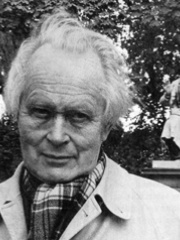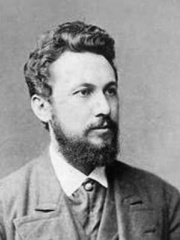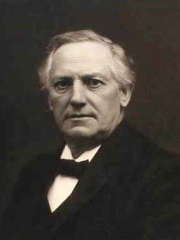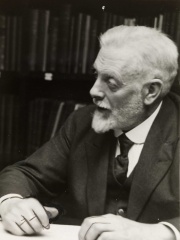






The Most Famous
MATHEMATICIANS from Denmark
This page contains a list of the greatest Danish Mathematicians. The pantheon dataset contains 1,004 Mathematicians, 8 of which were born in Denmark. This makes Denmark the birth place of the 24th most number of Mathematicians behind Romania, and Canada.
Top 8
The following people are considered by Pantheon to be the most legendary Danish Mathematicians of all time. This list of famous Danish Mathematicians is sorted by HPI (Historical Popularity Index), a metric that aggregates information on a biography's online popularity.

1. Harald Bohr (1887 - 1951)
With an HPI of 67.93, Harald Bohr is the most famous Danish Mathematician. His biography has been translated into 38 different languages on wikipedia.
Harald August Bohr (22 April 1887 – 22 January 1951) was a Danish mathematician and footballer. After receiving his doctorate in 1910, Bohr became an eminent mathematician, founding the field of almost periodic functions. His brother was the Nobel Prize-winning physicist Niels Bohr. He was on the Denmark national team for the 1908 Summer Olympics, where he won a silver medal.

2. Piet Hein (1905 - 1996)
With an HPI of 67.07, Piet Hein is the 2nd most famous Danish Mathematician. His biography has been translated into 33 different languages.
Piet Hein (16 December 1905 – 17 April 1996) was a Danish polymath (mathematician, inventor, designer, writer and poet), often writing under the Old Norse pseudonym Kumbel, meaning "tombstone". His short poems, known as gruks or grooks (Danish: gruk), first started to appear in the daily newspaper Politiken shortly after the German occupation of Denmark in April 1940 under the pseudonym "Kumbel Kumbell". He also invented the Soma cube and the board game Hex.

3. Georg Mohr (1640 - 1697)
With an HPI of 59.27, Georg Mohr is the 3rd most famous Danish Mathematician. His biography has been translated into 19 different languages.
Jørgen Mohr (Latinised Georg(ius) Mohr; 1 April 1640 – 26 January 1697) was a Danish mathematician, known for being the first to prove the Mohr–Mascheroni theorem, which states that any geometric construction which can be done with compass and straightedge can also be done with compasses alone.

4. Johan Jensen (1859 - 1925)
With an HPI of 58.00, Johan Jensen is the 4th most famous Danish Mathematician. His biography has been translated into 24 different languages.
Johan Ludwig William Valdemar Jensen (8 May 1859 – 5 March 1925), mostly known as Johan Jensen, was a Danish mathematician and engineer. He was the president of the Danish Mathematical Society from 1892 to 1903.

5. Agner Krarup Erlang (1878 - 1929)
With an HPI of 57.87, Agner Krarup Erlang is the 5th most famous Danish Mathematician. His biography has been translated into 19 different languages.
Agner Krarup Erlang (1 January 1878 – 3 February 1929) was a Danish mathematician, statistician and engineer, who invented the fields of traffic engineering and queueing theory. Erlang's 1909 paper, and subsequent papers over the decades, are regarded as containing some of most important concepts and techniques for queueing theory. By the time of his relatively early death at the age of 51, Erlang had created the field of telephone networks analysis. His early work in scrutinizing the use of local, exchange and trunk telephone line usage in a small community to understand the theoretical requirements of an efficient network led to the creation of the Erlang formula, which became a foundational element of modern telecommunications network studies.

6. Julius Petersen (1839 - 1910)
With an HPI of 57.69, Julius Petersen is the 6th most famous Danish Mathematician. His biography has been translated into 23 different languages.
Julius Peter Christian Petersen (16 June 1839 in Sorø, West Zealand – 5 August 1910 in Copenhagen) was a Danish mathematician. His contributions to the field of mathematics led to the birth of graph theory.

7. Jørgen Pedersen Gram (1850 - 1916)
With an HPI of 55.18, Jørgen Pedersen Gram is the 7th most famous Danish Mathematician. His biography has been translated into 19 different languages.
Jørgen Pedersen Gram (27 June 1850 – 29 April 1916) was a Danish actuary and mathematician who was born in Nustrup, Duchy of Schleswig, Denmark and died in Copenhagen, Denmark. Important papers of his include On series expansions determined by the methods of least squares, and Investigations of the number of primes less than a given number. The mathematical method that bears his name, the Gram–Schmidt process, was first published in the former paper, in 1883. For number theorists his main fame is the series for the Riemann zeta function (the leading function in Riemann's exact prime-counting function). Instead of using a series of logarithmic integrals, Gram's function uses logarithm powers and the zeta function of positive integers. It has recently been supplanted by a formula of Ramanujan that uses the Bernoulli numbers directly instead of the zeta function. In control theory, the Gramian or Gram matrix is an important contribution named after him. The Controllability Gramian and Observability Gramian are both important in the analysis of the stability of control systems. The Gram matrix is also important in deep learning, where it is used to represent the distribution of features in style transfer. Gram was the first mathematician to provide a systematic theory of the development of skew frequency curves, showing that the normal symmetric Gaussian error curve was but one special case of a more general class of frequency curves. Gram's theorem, the Gram–Charlier series, and Gram points are also named after him. He died on his way to a meeting of the Royal Danish Academy after being struck by a cyclist.

8. Poul Heegaard (1871 - 1948)
With an HPI of 51.26, Poul Heegaard is the 8th most famous Danish Mathematician. His biography has been translated into 16 different languages.
Poul Heegaard (Danish: [ˈhe̝ˀˌkɒˀ] ; November 2, 1871, Copenhagen - February 7, 1948, Oslo) was a Danish mathematician active in the field of topology. His 1898 thesis introduced a concept now called the Heegaard splitting of a 3-manifold. Heegaard's ideas allowed him to make a careful critique of work of Henri Poincaré. Poincaré had overlooked the possibility of the appearance of torsion in the homology groups of a space. He later co-authored, with Max Dehn, a foundational article on combinatorial topology, in the form of an encyclopedia entry. Heegaard studied mathematics at the University of Copenhagen from 1889 to 1893. Following years of travelling, and teaching mathematics, he was appointed professor at University of Copenhagen in 1910. An English translation of his 1898 thesis, which laid a rigorous topological foundation for modern knot theory, may be found at https://www.maths.ed.ac.uk/~v1ranick/papers/heegaardenglish.pdf. The section on "a visually transparent representation of the complex points of an algebraic surface" is especially important. In 1936, Heegaard served as the President of The Third International Congress of Nationalists at The Nobel Institute. Following a talk titled "A Biologist's View of the Future of the White Race," Heegaard hosted a garden party for the Congress participants. Following a dispute with the faculty over, among other things, the hiring of Harald Bohr as professor at the University (which Heegaard opposed); Heegaard accepted a professorship at Oslo in Norway, where he worked till his retirement in 1941.
People
Pantheon has 8 people classified as Danish mathematicians born between 1640 and 1905. Of these 8, none of them are still alive today. The most famous deceased Danish mathematicians include Harald Bohr, Piet Hein, and Georg Mohr.
Deceased Danish Mathematicians
Go to all RankingsHarald Bohr
1887 - 1951
HPI: 67.93
Piet Hein
1905 - 1996
HPI: 67.07
Georg Mohr
1640 - 1697
HPI: 59.27
Johan Jensen
1859 - 1925
HPI: 58.00
Agner Krarup Erlang
1878 - 1929
HPI: 57.87
Julius Petersen
1839 - 1910
HPI: 57.69
Jørgen Pedersen Gram
1850 - 1916
HPI: 55.18
Poul Heegaard
1871 - 1948
HPI: 51.26
Overlapping Lives
Which Mathematicians were alive at the same time? This visualization shows the lifespans of the 7 most globally memorable Mathematicians since 1700.

